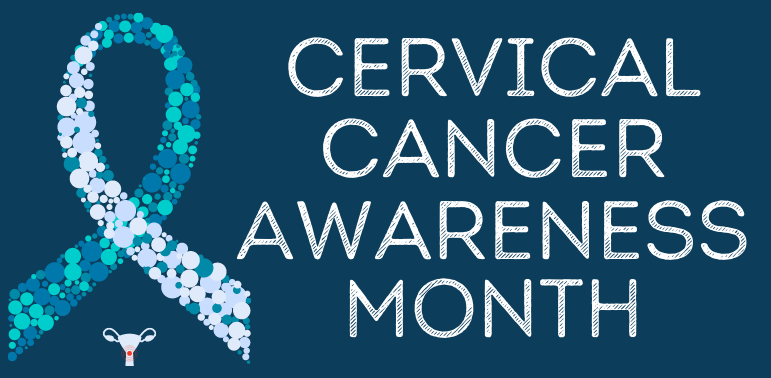January is Cervical Cancer Awareness Month. This month, take time to learn what can be done to lower the risk of cervical cancer.
Cervical Cancer was once a leading cause of death for women in the United States, but the cancer’s impact has reduced due to the diligence of screening and prevention. The Centers for Disease Control and Prevention (CDC) identifies two tests that help prevent or find cervical cancer early:
- A Pap Test, or Pap Smear, looks for precancers, which are cell changes on the cervix that might become cervical cancer if they are not treated appropriately
- The human papillomavirus (HPV) test looks for the virus that can cause these cell changes
According to the CDC, the first Pap test should be at age 21. If that test result is normal, the individual can wait three years for the next test.
For people 30 years or older there are three options:
- Pap test only: if the test result is normal, wait three years for the next test
- HPV test only: if the test result is normal, wait five years for the next test
- Pap and HPV test together: if test results are normal, wait five years for next test
The HPV vaccine prevents new infections; however, it will not treat existing infections or diseases.
In the United States, there are about 13,000 new cervical cancer cases and about 4,000 women die from cervical cancer each year. In Pennsylvania, cervical cancer has reduced from 630 cases in 1999 to 487 cases in 2019.
While cervical cancer can affect every demographic, the CDC reports that Hispanic women have the highest rates of developing it and Black women have the highest rates of dying from it.
Marginalized groups, like Hispanic and Black women, are less likely to receive adequate care. Health providers may have inherit biases and prejudices, which can cause them to treat Hispanic and Black women differently than White women. The different care can cause a lack of informed healthcare decisions like being vaccinated against HPV or being screened for cervical cancer.
In healthcare, strides need to be made to ensure all people get the best healthcare they can to live long and healthy lives.
When it comes to cervical cancer that means equal education and guaranteeing HPV vaccines, Pap Tests, and HPV Tests to those eligible.
Sources:
https://www.cdc.gov/cancer/dcpc/resources/features/cervicalcancer/index.htm
https://www.cdc.gov/cancer/cervical/statistics/index.htm

